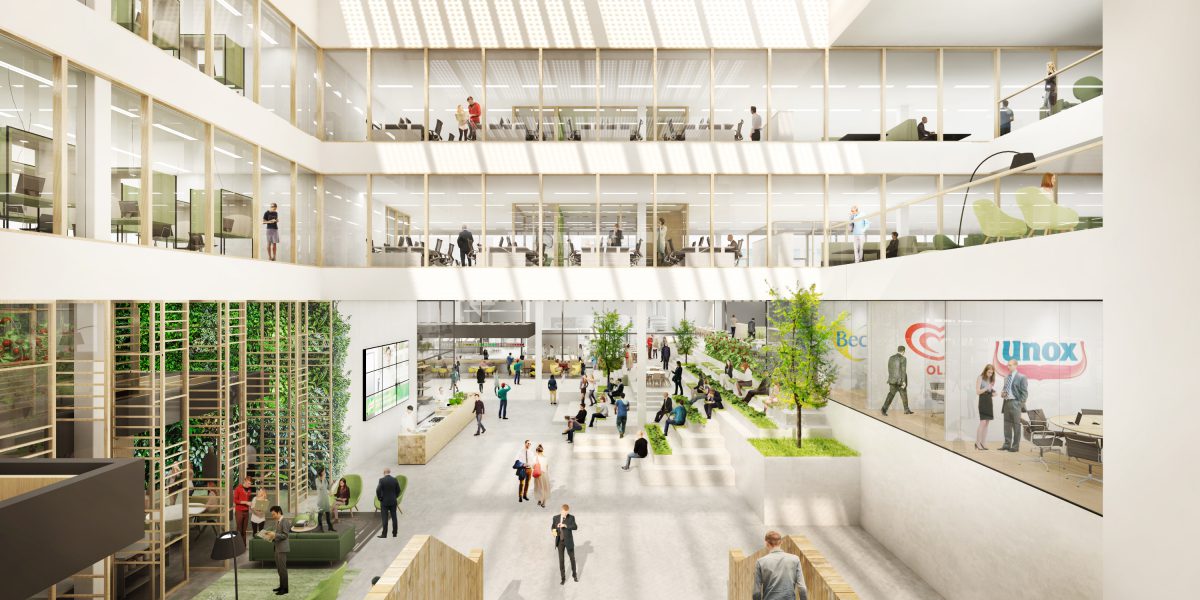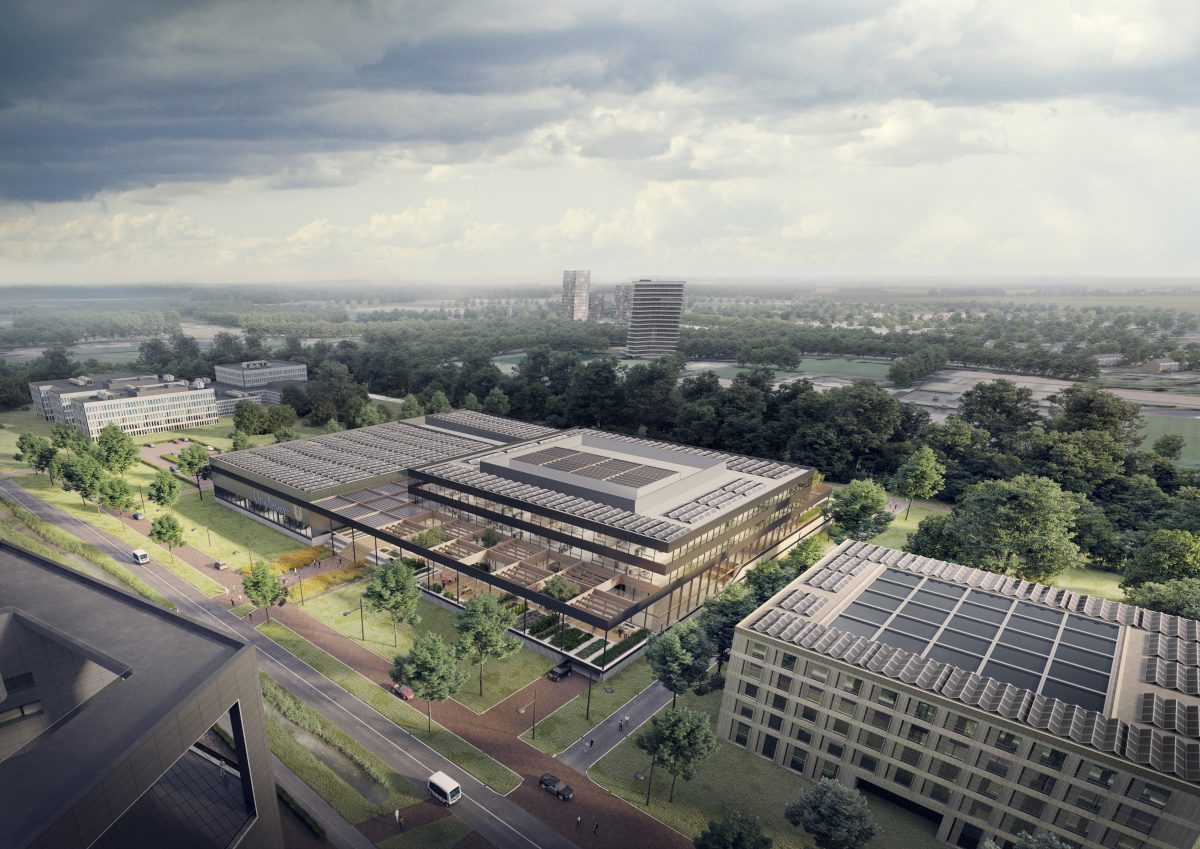BREEAM rating of Outstanding for Unilever's Hive building
Overview
Central in getting a BREEAM Outstanding certification was assuring high user quality and user value. In Unilever’s vision, this includes managing health and comfort, energy consumption, flexibility, and guaranteeing performance. Realising the vision through design and build, the new Global Foods Innovation Center (now known as Hive) received BREEAM Outstanding certification with a score of 91.23%.
About
With more than 400 brands bought in 190 countries, Unilever have a unique opportunity to work with consumers to make sustainable living commonplace.
Background
Unilever wanted to get BREEAM certified to realise a Global Foods Innovation Centre in The Netherlands that’s truly future-proof and that maximises user-value. Throughout the process, BREEAM guided the company towards more integrated solutions that makes the building healthier and better-suited to its users, expandable and adaptable. The idea was that this investment would return more value in the long run.
Solutions
The building’s transparent design and strategic location on the university campus ensure optimum interaction between Unilever and various relevant external parties. Knowledge-sharing is built into the design. Researchers and students from Wageningen University (WUR), start-ups, knowledge centres, and consumers will be able to meet here and work together in a sustainable manner on innovations in the food industry.
The Hive consists of a pilot plant, a food & customer experience area, and two floors of offices and laboratories. The pilot plant will be a mini factory for the small-scale production of new products. This mini factory will link directly to the food & customer cxperience area, where test kitchens will be home to daily experimentation with innovative ingredients for the development of new products. Employees, experts, students, and consumers can try the new products and share their views here or in the concept store.
A light-filled atrium with a skylight and a wide wooden staircase will connect Unilever’s offices and laboratories with the public area on the ground floor. The perimeter of the entire facility will continue underground, where it will become the boundary of a vast car park for use by employees of both Unilever and Wageningen University.

Benefits
At commissioning, the building aspires to meet the highest sustainability standards and circular economy principles. The Hive contributes to the health and well-being of its users through various innovative techniques and a refined layout, in which movement and meeting are stimulated. The new building is an opportunity to manifest the norms, values, and ambitions of Unilever in a physical environment. We want to inspire the world with sustainable, higher-level innovations for health and nutrition.
The vision of a future-proof building has been divided into four themes: health, flexibility, energy usage, and material efficiency, and circularity. These themes are the basis for sustainability for the Hive. By means of the following elaboration, it is made clear how the themes have been converted into the design of a sustainable, healthy, and flexible building.
The building promote spontaneous encounters between the work processes by means of transparency, strategic informal meeting places such as coffee corners, and the wide staircases that will encourage people to travel between floors.
A sustainable building offers a healthy and comfortable working environment for all building users. Health is a primary condition for working well and effectively. In a healthy building, there is less absenteeism and productivity are demonstrably higher. Health is not just about heat and cold. It is also about (day) light, views of green, air quality, acoustics, and a functional and ergonomic workplace.
Sustainable buildings have a low energy consumption. This is achieved in the design by the following measures:
A compact design so that energy losses are reduced
An optimised façade, creating a balance between the maximum entry of daylight, light protection, and the prevention of heat loss
Very airtight construction
Heat recovery from ventilation air
Maximum control of the installations based on user requirements and presence (presence detection / CO2 monitoring): the occupancy and usage times in the building will vary considerably. Significant energy gains will be made by matching the use and the occupancy rate of the building with the operation of the installations
All lighting is LED and equipped with sensors for presence and daylight. The sensors are also used to regulate the climate
Sustainable buildings can provide their own energy needs. An all-electric energy concept was chosen in which air-cooled heat pumps and water-cooled heat pumps (in combination with heat-cold storage in the ground) provide the cold and heat demand of the building. The roof surface is maximally used for installing over 1800 PV panels to ensure energy neutrality.
A sustainable building is circular and handles materials and raw materials responsibly. The design has been implemented in various ways such as:
Concrete building parts have a high percentage (up to 30%) of recycled aggregates such as debris and concrete granules
All wood in the building is FSC certified and therefore has a sustainable origin
The building volume has been optimised to achieve the largest possible volume with as little material as possible
The interior has been developed separately from the hull so that it is possible to change without intervening measures
Building elements are designed to be disassembled, making it possible to reuse elements and raw materials in a simple manner when they are no longer needed in the current building
While not explicitly featured within BREEAM, integral to Unilever’s vision is the large-scale reuse of equipment and furniture of the current sites in the Global Foods Innovation Centre
By applying ionisation of the outside air and controlling the building all through a multi-sensor system, innovations are added to the building that fit seamlessly with our vision of a future-proof building. Measurements in offices and factories show that with the current method of air treatment only 50% of the total amount of volatile organic constituents is removed from the indoor air, so that more ventilation capacity is needed, and bacteria and fungi can multiply more easily. By means of ionisation of the air, the natural cleansing power of oxygen is used.
The operation of the multi-sensor system is based on thermographic measurement in a room. In contrast to traditional room temperature measurements, which are based on measuring the air temperature at a single location in the room, the infrared measuring system offers a complete and continuous picture of the thermographic properties of the (office) environment. Because of this measurement, it is possible to allow the installations to anticipate various changes in the room (temperature, occupancy, energy loss, heat sources).

